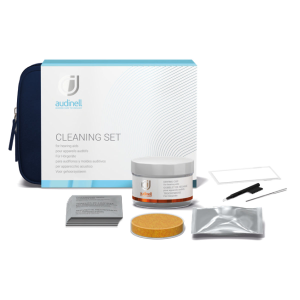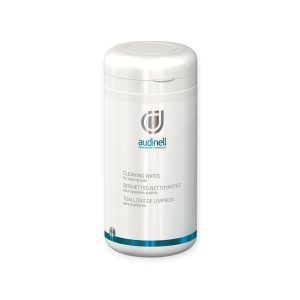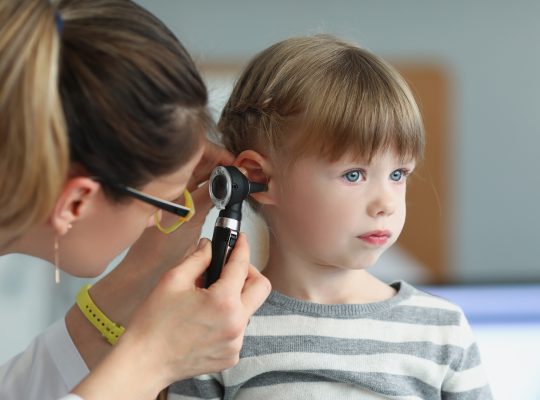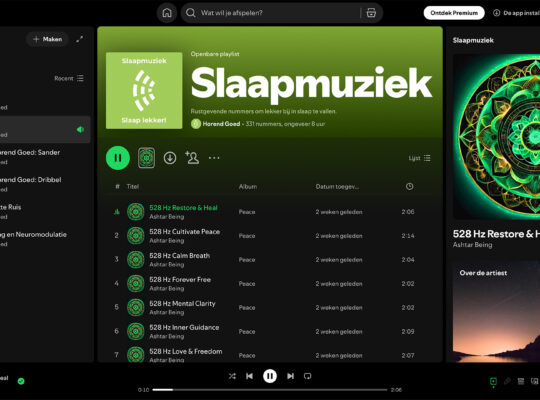Earwax. It doesn’t sound sexy and it usually doesn’t look charming either. Yet the stuff is important for your ears. Earwax keeps your ear canal supple, protects against dirt, bacteria and dehydration. But: your hearing aid is not so fond of it. In fact, earwax is the biggest reason why hearing aids stop working properly or even break down. And that is a shame.
In this blog, we explain why earwax so easily sabotages your hearing aid, how to prevent it, and how to keep your ears clean in a safe way – even with a high-tech camera.
Why your ears make wax (and why that’s okay)
Earwax is a kind of self-cleaning mechanism of your body. It traps dust particles, keeps the skin in your ear canal supple and provides a slightly acidic environment where bacteria don’t feel comfortable. In other words, earwax is not waste; it is a protective layer.
But when you wear a hearing aid, that wax can accumulate in places it shouldn’t. In your ear as well as in the device itself.
What does earwax do to your hearing aid?
Hearing aids are little marvels of technology. But they are also fragile. Certainly the speaker, sound channel and microphones are susceptible to dirt. And guess what? Earwax is sticky, greasy and crawls all over the place. It can:
- clog filters and hoses
- make the sound dull or crackling
- letting the device fail
- damage internal components
It’s a bit like fogging up your glasses … but from the inside out. You hear less, the device performs worse, and in time, you even run the risk of irreparable damage.
How do you recognize earwax problems?
You can often tell by little signs:
- Sound sounds softer or distorted
- Your device beeps, creaks or drops out
- You have to keep turning up the volume
- You hear less than you are used to
If your device suddenly stops doing what it should, ear wax is one of the first things to rule out.
Protecting your hearing aid from earwax
Fortunately, there are many things you can do to keep your device clean, fresh and working. Consider:
Daily cleaning
Use a dry cloth, special cleaning cloth or brush every day. Don’t forget the microphone openings and sound channels. There are complete cleaning kits that make it extra easy for you.
Replacing filters in a timely manner
Is there a wax filter on your device? Good. But you should replace it. Once every two to four weeks is often sufficient. Don’t wait until your device stops working.
Keeping your ears clean and dry
Moisture and earwax are not a good combo. Wear your hearing aid only when your ears are dry. So first dry off after showering or swimming, then put on your hearing aid.
Use a drying box
A drying box dries and cleans your appliance overnight. UV light kills bacteria, and condensation disappears like snow in the sun. Your appliance demonstrably lasts longer.
Cleaning your ears with a Bebird ear cleaner with camera
Some people produce a little more earwax than average. Or it accumulates and gets stuck. Then, of course, you can go to the doctor. But more and more people are using a Bebird ear cleaner with camera. And honestly? That’s quite a fascinating piece of technology.
A Bebird is an electric ear cleaning device with a tiny camera on the end. Through an app on your phone, you can see live what is happening in your ear. This allows you to remove earwax very precisely and gently, without pushing or scratching at random.
That means no cotton swabs that just push everything deeper, but controlled cleaning with a view of what you’re doing. It’s safe, fast, and actually kind of fun (at least if you’re not averse to a little earwax).
Bebird Ear Cleaners at Horend Goed
Note: Only use the Bebird if you know what you are doing, and always follow the instructions for use. Feeling doubt? Ask a professional for help.
Also important for children
Children often produce more earwax, and they sometimes wear their hearing aids less neatly than adults. Check their devices regularly and make it a regular routine. Brushing briefly before bed often works best – just like brushing teeth, but with a brush for their hearing aids.
For children, earwax is also a reason to pay extra attention during swimming lessons or vacations by the sea. Custom-made swim caps can help keep water and dirt out.
What if the device is already clogged?
Don’t panic. Contact your hearing care professional (that’s us!). In many cases, cleaning or changing a filter is enough. Above all, don’t wait too long, because moisture and dirt can eventually corrode parts.
In short: take care of your ears as well as your device
Earwax is not an enemy – until it sneaks into your hearing aid. With some simple habits, you can prevent it. Keep your ears clean, use a Bebird if you like it, clean your device daily and use a drying box. Then it will all stay fresh and functioning much longer.
Do you have questions about maintenance, filters or want advice on safe ear cleaning? We are happy to think with you. With or without a camera in your ear.
















